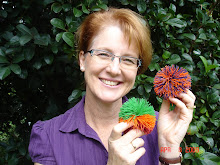- ASK
- MASK
- TASK
- LAST
- FAST
- PAST

Relief-Insight: A teacher's "insight" into the teaching world of the Casual/Relief/Supply/Substitute Teacher. This collection of ideas,tips and management strategies has been born from the need to share professionally the teaching skills one requires to effectively and efficiently manage and engage today's primary school student.


My solution is to.......
In the classroom, I don't always say the same thing. If we have just finished a Maths lesson with the focus on prime numbers, I might ask for any prime number of pieces of litter under ten. Or I may ask for 2/3 of 9, or perhaps a random number fact and if you make an error it costs some more to leave the room. It gives me a chance to stand at the door and speak to each child as they deposit their contribution. All designed to build relationships, consolidate learning and make the day fun!
Blessings for the journey....
Live,laugh and learn!
Carmel

Over the years I have found that I am best to have a clear idea of the day's outcomes before discussing it with the whole class. It seems to give the children a feeling that you do know what you are doing and you are much less likely to have a rocky start to the day. Children who feel uncomfortable with the change of teacher or have special needs also enjoy the empowerment of a visual daily agenda. I also enjoy the security of this tool as I often find myself so focused on the interactions and teaching that time passes too quickly. It truly is a way of managing both time and ourselves! I also find it a brilliant way to review the day with the class at the close of the day. Now I just can't have them going home saying that lunch was the highlight of the day, can I!




The other interesting fact I have come to discover is that this little koosh ball is officially classified in a group of Occupational Therapists tools known as "Fidgets." Want a quick definition..... have a look at http://www.integrationscatalog.com/sportime-shared/articles/fidget.jsp The more I learn about our sensory systems and their impact on learning, the more I want to know! Each new understanding impacts on the way I see the individual child in the learning environment and the strategies I use on a daily basis.
 Everyday Strategies for the "Multi-Talented" Teacher!
Everyday Strategies for the "Multi-Talented" Teacher!I would love to hear of what you might have used ,or are using, that works in a similiar fashion. Perhaps you might try this humble ideas and improve on them or share your success with them. Love to hear your comments.
Live, Learn and Laugh!
Blessings for the Journey...
Carmel